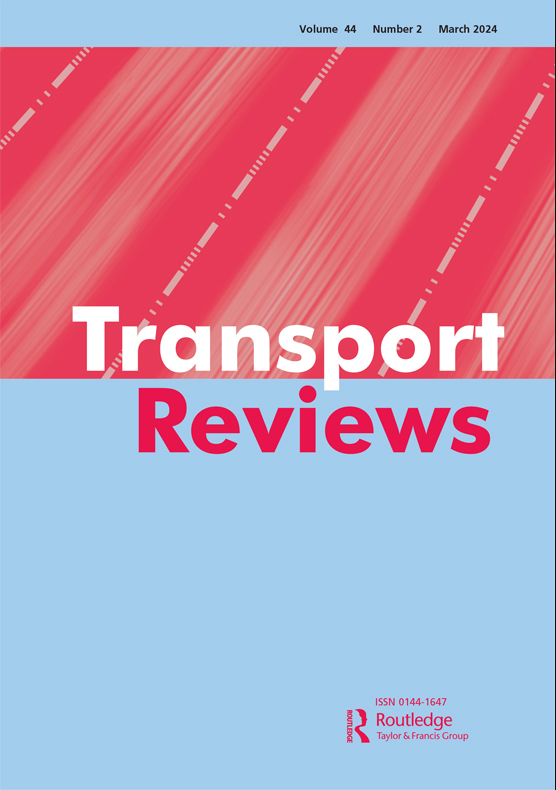Spatial factors associated with usage of different on-demand elements within mobility hubs: a systematic literature review
IF 9.9
1区 工程技术
Q1 TRANSPORTATION
引用次数: 0
Abstract
Mobility hubs offer a strategic opportunity to enhance multimodal transportation and reduce greenhouse gas emissions within the transport sector. Identifying the spatial factors determinants influencing the usage of mobility hub components is essential for policymakers and transport planners aiming to identify their optimal locations. This study undertakes a systematic literature review and ranking of spatial factors associated with the usage of key on-demand services within mobility hub elements, including bike sharing, scooter sharing, car sharing, ride hailing and taxi and electric vehicle charging stations. Utilising databases such as Web of Science, Google Scholar and Francis & Taylor, we evaluated 119 records, identifying 39 key factors from social and built environments that are associated with usage of the on-demand elements. Key findings highlight the significance of population density, employment density, proximity to public transport, recreational POIs and household income, along with a noted negative association with the factor slope. This research contributes to exploring how these factors align across various on-demand mobility services that can be potentially used for policymakers, and transportation planners in evaluating potential strategies for the optimal allocation and development of mobility hubs.
与使用交通枢纽内不同按需要素相关的空间因素:系统性文献综述
交通枢纽为加强多式联运和减少交通部门的温室气体排放提供了战略机遇。对于旨在确定其最佳位置的政策制定者和交通规划者来说,确定影响交通枢纽组成部分使用的空间因素至关重要。本研究对与交通枢纽要素中主要按需服务使用相关的空间因素进行了系统的文献综述和排序,包括共享单车、共享滑板车、共享汽车、叫车服务、出租车和电动汽车充电站。利用科学网、谷歌学术和弗朗西斯-泰勒等数据库,我们评估了 119 条记录,从社会和建筑环境中确定了 39 个与按需服务使用相关的关键因素。主要发现强调了人口密度、就业密度、公共交通就近性、娱乐性 POIs 和家庭收入的重要性,以及与斜率因素的显著负相关。这项研究有助于探索这些因素如何与各种按需移动服务相协调,从而为政策制定者和交通规划者评估移动枢纽的优化分配和发展战略提供潜在参考。
本文章由计算机程序翻译,如有差异,请以英文原文为准。
求助全文
约1分钟内获得全文
求助全文
来源期刊

Transport Reviews
TRANSPORTATION-
CiteScore
17.70
自引率
1.00%
发文量
32
期刊介绍:
Transport Reviews is an international journal that comprehensively covers all aspects of transportation. It offers authoritative and current research-based reviews on transportation-related topics, catering to a knowledgeable audience while also being accessible to a wide readership.
Encouraging submissions from diverse disciplinary perspectives such as economics and engineering, as well as various subject areas like social issues and the environment, Transport Reviews welcomes contributions employing different methodological approaches, including modeling, qualitative methods, or mixed-methods. The reviews typically introduce new methodologies, analyses, innovative viewpoints, and original data, although they are not limited to research-based content.
 求助内容:
求助内容: 应助结果提醒方式:
应助结果提醒方式:


